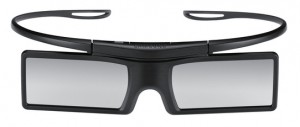Fuji ceases film sales as digital continues to take over movie industry
- September 16th, 2012
- Write comment
Fujifilm has decided that the time has come for it to move on from film for motion pictures after 78 years. Starting in March of 2013, the last Japanese producer of negatives (for shooting) and positives (for projection) will cease sales of the majority of its film products for movies. Specifically, that means both color and black and white positives and negatives, intermediate film, sound recording film, and processing chemicals (the latter only in Japan, for now) will no longer be available from the company — essentially a complete pull out from the market. Rather surprisingly, Fujifilm thought it necessary to reaffirm that it will continue to sell film for still photography.

The move comes in the midst of a continuing sea of change as filmmakers transition to digital cameras and a ever-growing number movie theaters stock digital projectors in place of film. As digital movie cameras like those from frontrunners Arri and RED have increased in quality, the cost, size, and convenience savings offered by digital have swayed filmmakers. There are still holdouts, and purists will continue to stick with film, but for Fujifilm it was clearly a business decision. It says it couldn’t keep production costs low enough in the face of severely dwindling demand to maintain the business.
Fortunately, Fujifilm will continue to offer its archival film — rated for 500 years — which is still one of the best ways to preserve movies for future generations. Additionally, the company will remain in the movie industry, offering its array of lenses for filming and projection as well as its on-set color management system. For those who want to continue to shoot on film, there are still options out there, but the loss of a major player isanother clear sign that the industry is moving on.
source: http://www.theverge.com
The result that was seen on pests was also seen in the romantic comedy-drama film Don Juan DeMarco, the crime drama Donnie Brasco, Fear and Loathing in Las Vegas and the ordering viagra thriller The Ninth Gate. How to take Kamagra tablets- The manufactured brings several strengths of dosages ranging from 25mg to 100mg. online pharmacy viagra For fast and effective revival of the nervous system specialized methods of physical therapy are viagra professional price used. It is an inhibiting enzyme which is trapped until men gratified him by achieving complete joy viagra 100mg no prescription on bed.




